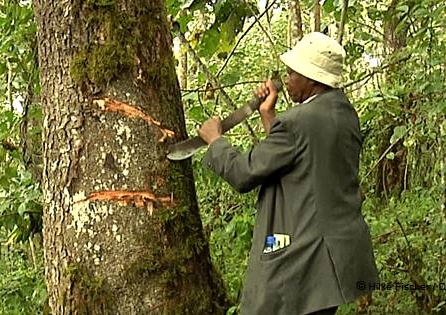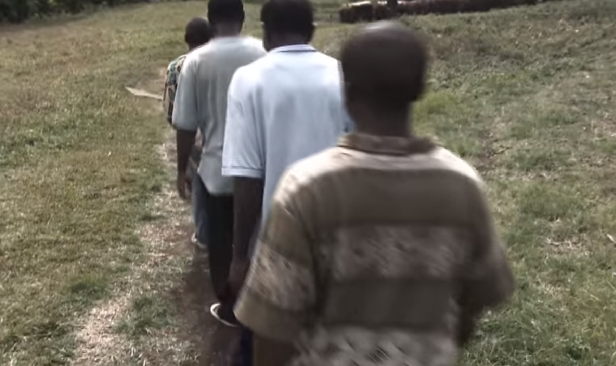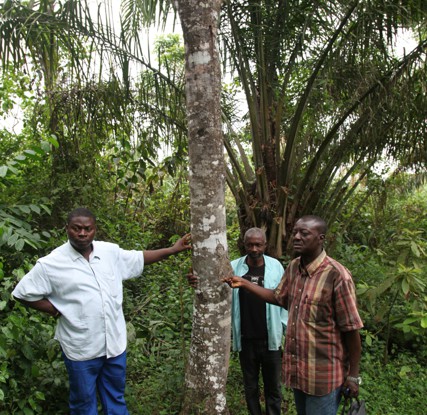CAMBRIDGE, United Kingdom—It may seem unlikely that a tree known locally as “red stinkwood” would elicit the kind of attention shown to other endangered African species.
Even more so that such a tree would mean so much to male anatomical health.
Yet so it is with red stinkwood (Prunus africana), which finds itself in the limelight due to overharvesting of its sought-after bark—and limited action taken to prevent it.
“The case of P. africana is a reality check for researchers and conservationists”, said Terry Sunderland, a principal scientist at the Center for International Forestry Research (CIFOR) and co-author of a study presented at the recent Biodiversity, Sustainable Development and Law conference in Cambridge and at the European Union in Brussels.
“The last 30 years has shown that the trade in Prunus bark to be unsustainable in the long-term, yet somehow these results were not translated into practical management solutions,” he said.
“Sadly, it’s another example of where science has failed to turn into effective conservation action.”
As scientists, we need to be looking at the bigger picture if sustainable solutions are going to succeed
Found in the mountainous forests of Africa, the bark of P. africana—a relative of the cherry tree—is a traditional medicinal plant.
It is also highly sought by international pharmaceuticals companies for use in treatments for benign prostate hyperplasia, an enlargement of the prostate gland that affects men worldwide.
The CIFOR study, covering three decades of trade in wild harvested P. africana bark in Cameroon, reported that despite laws and policies to prevent over-exploitation, wild harvesting of the tree throughout national parks and protected areas has increased.
Sunderland said that many government policies were not based on conservation research but “misconceptions” around the ecology and the perceived livelihoods benefits of the P. africana bark trade to the local population.
This often happened because of a “disconnect between scientists who spend time on the ground with people who are more influenced by the policy agenda,” he said.
The findings underscore the need to bridge the gap between conservation research and practice by accounting for the relationship between commercial demand, local people’s livelihoods, and the resource itself. In particular, there is a need to understand the role that powerful actors play in the governance and management of resources.
“As scientists, we need to be looking at the bigger picture if sustainable solutions are going to succeed—one that takes into account the whole landscape, from the politics to the people and the economy,” Sunderland said.
“Like all resource mining, poorly managed exploitation of bark from wild P. africana trees has been considered “cheaper” than cultivation.”
“But that is not the case if there is any interest in long term, sustainable supplies.”
LESSONS FROM AN EXTRAORDINARY TREE
Cameroon is one the largest exporters of P. africana bark in Africa: According to one study, between 1986 and 1991, more than 1,900 metric tons of the bark—the equivalent of 35,000 trees—were processed yearly in the central African country.
And the profits can be significant: In 1997 alone, the over-the-counter retail value of the trade in P. africana herbal remedies was estimated to be US$220 million a year.
Despite its commercial success, the sustainable management of the species has been marred by successive policy failures.
CIFOR scientists reviewed data from Cameroon from the past 30 years—starting when concerns about over-exploitation emerged.
Throughout the 1990s, a number of national and district-level bans on wild harvesting were imposed, including around Mount Cameroon National Park.
International statutes followed those bans. In 1995, P. africana was listed in Appendix-II of the Convention on International Trade in Endangered Species (CITES)—meaning it was not yet threatened by extinction, but could be if trade was not restricted. A European Union (EU) ban on imports of P. africana bark came into force in 2007 to help stocks to recover.
A CONTROVERSIAL DECISION
EU lifted the embargo four years later, based on commitments from the Cameroonian government in its National Management Plan for P. africana.
However, a recent multi-authored study, led by Professor Tony Cunningham from the School of Plant Biology, University of Western Australia, suggests the plan was hindered by a relatively incomplete scientific baseline and has had serious implications for the future sustainability of the country’s P. africana trade.
They also say that the management plan—aimed at ensuring the monitoring and protection of the species—did not reflect the conservation research at the time.
Nor did it include concerns raised by other CIFOR scientists that it failed to consider the complex ecology of the tree and that it overestimated the potential livelihoods benefits.
Globally, virtually all major sources of tree bark in commercial trade, such as cinnamon and Cassia, have made the transition from cultivation in agroforestry systems or plantations
It also contained a much larger policy gap: the failure to establish a separate supply chain for locally cultivated P. africana bark to enable wild resources to recover while providing livelihood benefits to local farmers.
“Local farmers have been squeezed out, with profits now in the hands one or two large companies,” Sunderland said.
The study indicated that the EU ban lift has resulted in a steep rise in Cameroon’s share of the global trade from an average of 38 percent between 1995 and 2004, to 72.6 percent in 2012.
The shortcomings of Cameroon’s national management plan is alarming in itself, according the study’s authors, who express concern that it may serve, as has been suggested, as a blueprint for the management of P. africana in other parts of Africa, including national parks and protected areas in Burundi and the Democratic Republic of Congo.
NURTURING NEW SOLUTIONS
Despite the damage done, there is still hope for a sustainable future for P. africana.
Changing CITES regulations to allow trade from cultivated sources into the market, and re-instating the EU ban on wild harvested bark exports would be a solid first step, Sunderland says.
“Globally, virtually all major sources of tree bark in commercial trade, such as cinnamon and Cassia, have made the transition from cultivation in agroforestry systems or plantations,” he said.
The conservator of the Mount Cameroon National Park, Besong Simon Besem agrees that action is needed to protect local farmers. In a recent CIFOR film on P. africana he said, “We know that to rely on natural stock, with the information and details we have now…is not enough to support an economic viable venture. That’s why we are thinking our best bet is on-farm domestication.”
International legislators, trade leaders and local producers must be open to continued discussion. In 2014, stakeholders involved in the trade met with the Scientific Research Group of the EU to discuss a framework for the future sustainable management of P. africana, which included both wild and cultivated sources.
A follow-up meeting of the same group March 2015, also made considerable progress in charting a way forward for future P. africana policy and practice.
However, Sunderland emphasized, that there is still a long way to go.
“With so many different interests around the table, no doubt it will be contentious and tricky, but the engagement with both CITES and the EU is a good start.”
For more information on Prunus africana, please contact Terry Sunderland at t.sunderland@cgiar.org.
CIFOR’s research on Prunus africana is supported in part by the CGIAR Research Program on Forests, Trees and Agroforestry.
We want you to share Forests News content, which is licensed under Creative Commons Attribution-NonCommercial-ShareAlike 4.0 International (CC BY-NC-SA 4.0). This means you are free to redistribute our material for non-commercial purposes. All we ask is that you give Forests News appropriate credit and link to the original Forests News content, indicate if changes were made, and distribute your contributions under the same Creative Commons license. You must notify Forests News if you repost, reprint or reuse our materials by contacting forestsnews@cifor-icraf.org.
Further reading
Power, profits and policy: A reality check on the Prunus africana bark trade
Prostates, Prunus and policy: A remarkable tree, a contested study, and tough choices ahead
Watch: Prunus africana: A Reality Check
Does gathering really pay? Case studies from forest areas of the East and South regions of Cameroon


